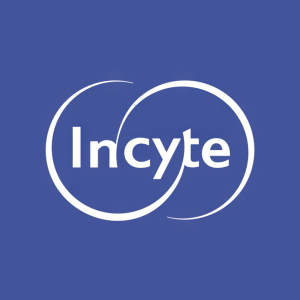Incyte Announces Long-Term Extension Data from Phase 3 TRuE-V Program Demonstrating Long-Term Safety and Durability of Response of Opzelura® (Ruxolitinib) Cream in Vitiligo
- Patients achieving a high level of facial repigmentation (≥F-VASI90) at Week 52 maintained durable response one year following withdrawal of treatment
- Continued treatment with Opzelura for up to two years resulted in sustained facial repigmentation and further improvements in facial and total body repigmentation
- Data featured as oral presentations in two late-breaking abstract sessions at the 2023
The 104-week long-term extension (LTE) data build on the positive 52-week TRuE-V1 and TRuE-V2 results previously announced and published in
“The results presented today at AAD are significant because they provide important long-term efficacy and safety data for nonsegmental vitiligo patients treated with Opzelura,” said
The LTE evaluated TRuE-V1 and TRuE-V2 study participants from Weeks 52 to 104 in two separate cohorts based on patients who achieved a complete or almost complete response by Week 52. In the cohort of patients who achieved complete or almost complete facial repigmentation (≥F-VASI90, Cohort A), patients were randomized in a double-blind fashion to receive Opzelura twice daily (BID) or vehicle (i.e., Opzelura withdrawal) through Week 104 to evaluate time to relapse (defined as <F-VASI75) and time to maintain ≥F-VASI90 response; time to regain F-VASI75 and F-VASI90 response after relapse (with reinitiation of Opzelura treatment) was also evaluated. In the cohort of patients who did not achieve complete or almost complete facial repigmentation (<F-VASI90, Cohort B), all patients were continued on Opzelura BID to evaluate long-term efficacy and safety.
Key findings from Cohort A:
-
Many patients who achieved a high level of facial repigmentation (≥F-VASI90) in TRuE-V1/TRuE-V2 were able to maintain durable response for one year after discontinuing Opzelura treatment.
-
Approximately
29% of patients randomized to the withdrawal arm (i.e., applying vehicle cream) relapsed (<F-VASI75) during the extension period (through Week 104). -
Among patients who relapsed (<F-VASI75) in the withdrawal arm,
75% of patients regained ≥F-VASI75 once treatment with Opzelura was reinitiated (median 12 weeks) and69% of patients regained ≥F-VASI90.
-
Approximately
-
For those continuing Opzelura treatment, approximately
62% of patients who achieved ≥F-VASI90 at Week 52 maintained response for one year with ongoing Opzelura treatment. - Opzelura was well tolerated with no serious treatment-related adverse events through Week 104. Mild or moderate treatment-related adverse events among patients in the Opzelura arm included application site dermatitis, application site rash and hyperlipidemia.
Key findings from Cohort B:
-
In patients who did not achieve near complete facial repigmentation (<F-VASI90) at Week 52 and continued treatment with Opzelura, improvements in facial and total body repigmentation, as shown by greater proportions of patients reaching F-VASI75 and T-VASI50, were observed through Week 104.
-
For patients treated with Opzelura from Day 1 in the parent studies (TRuE-V1 and TRuE-V2), the percentage who achieved F-VASI75 at Week 104 more than doubled (
66% ) compared to Week 52 (31% ), and approximately34% attained F-VASI90 at Week 104. -
Additionally, T-VASI50 was achieved at Week 104 by
64% of TRuE-V1 and TRuE-V2 patients applying Opzelura since Day 1, increasing from43% at Week 52.
-
For patients treated with Opzelura from Day 1 in the parent studies (TRuE-V1 and TRuE-V2), the percentage who achieved F-VASI75 at Week 104 more than doubled (
- Opzelura was well tolerated with no serious treatment-related adverse events through Week 104. All treatment–related adverse events in the Opzelura arm were mild or moderate, the most common being application site pruritus.
“I am extremely encouraged by these data, which show continued improvements in facial and total body repigmentation over two years of treatment with Opzelura,” said
About Vitiligo
Vitiligo is a chronic autoimmune disease characterized by depigmentation of skin that results from the loss of pigment-producing cells known as melanocytes. Overactivity of the JAK signaling pathway is believed to drive inflammation involved in the pathogenesis and progression of vitiligo. In
About TRuE-V
The TRuE-V clinical trial program includes two Phase 3 studies, TRuE-V1 (NCT04052425) and TRuE-V2 (NCT04057573), evaluating the safety and efficacy of Opzelura in patients with vitiligo. Each study enrolled approximately 300 patients (age ≥12 years) who have been diagnosed with nonsegmental vitiligo.
About Opzelura® (ruxolitinib) Cream
Opzelura, a novel cream formulation of Incyte’s selective JAK1/JAK2 inhibitor ruxolitinib, approved by the
On
Opzelura is a trademark of
IMPORTANT SAFETY INFORMATION
OPZELURA is for use on the skin only. Do not use OPZELURA in your eyes, mouth, or vagina.
OPZELURA may cause serious side effects, including:
Serious Infections: OPZELURA contains ruxolitinib. Ruxolitinib belongs to a class of medicines called Janus kinase (JAK) inhibitors. JAK inhibitors are medicines that affect your immune system. JAK inhibitors can lower the ability of your immune system to fight infections. Some people have had serious infections while taking JAK inhibitors by mouth, including tuberculosis (TB), and infections caused by bacteria, fungi, or viruses that can spread throughout the body. Some people have been hospitalized or died from these infections. Some people have had serious infections of their lungs while taking OPZELURA. Your healthcare provider should watch you closely for signs and symptoms of TB during treatment with OPZELURA.
OPZELURA should not be used in people with an active, serious infection, including localized infections. You should not start using OPZELURA if you have any kind of infection unless your healthcare provider tells you it is okay. You may be at a higher risk of developing shingles (herpes zoster) while using OPZELURA.
Increased risk of death due to any reason (all causes): Increased risk of death has happened in people 50 years of age and older who have at least 1 heart disease (cardiovascular) risk factor and are taking a medicine in the class of medicines called JAK inhibitors by mouth.
Cancer and immune system problems: OPZELURA may increase your risk of certain cancers by changing the way your immune system works. Lymphoma and other cancers have happened in people taking a medicine in the class of medicines called JAK inhibitors by mouth. People taking JAK inhibitors by mouth have a higher risk of certain cancers including lymphoma and lung cancer, especially if they are a current or past smoker. Some people have had skin cancers while using OPZELURA. Your healthcare provider will regularly check your skin during your treatment with OPZELURA. Limit the amount of time you spend in the sunlight. Wear protective clothing when you are in the sun and use a broad-spectrum sunscreen.
Increased risk of major cardiovascular events: Increased risk of major cardiovascular events such as heart attack, stroke, or death have happened in people 50 years of age and older who have at least 1 heart disease (cardiovascular) risk factor and taking a medicine in the class of medicines called JAK inhibitors by mouth, especially in current or past smokers.
Blood clots: Blood clots in the veins of your legs (deep vein thrombosis, DVT) or lungs (pulmonary embolism, PE) can happen in some people taking OPZELURA. This may be life-threatening. Blood clots in the vein of the legs (deep vein thrombosis, DVT) and lungs (pulmonary embolism, PE) have happened more often in people who are 50 years of age and older and with at least 1 heart disease (cardiovascular) risk factor taking a medicine in the class of medicines called JAK inhibitors by mouth.
Low blood cell counts: OPZELURA may cause low platelet counts (thrombocytopenia), low red blood cell counts (anemia), and low white blood cell counts (neutropenia). If needed, your healthcare provider will do a blood test to check your blood cell counts during your treatment with OPZELURA and may stop your treatment if signs or symptoms of low blood cell counts happen.
Cholesterol increases: Cholesterol increase has happened in people when ruxolitinib is taken by mouth. Tell your healthcare provider if you have high cholesterol or triglycerides.
Before starting OPZELURA, tell your healthcare provider if you:
- have an infection, are being treated for one, or have had an infection that does not go away or keeps coming back
- have diabetes, chronic lung disease, HIV, or a weak immune system
- have TB or have been in close contact with someone with TB
- have had shingles (herpes zoster)
- have or have had hepatitis B or C
-
live, have lived in, or have traveled to certain parts of the country (such as the
Ohio andMississippi River valleys and the Southwest) where there is an increased chance for getting certain kinds of fungal infections. These infections may happen or become more severe if you use OPZELURA. Ask your healthcare provider if you do not know if you have lived in an area where these infections are common. - think you have an infection or have symptoms of an infection such as: fever, sweating, or chills, muscle aches, cough or shortness of breath, blood in your phlegm, weight loss, warm, red, or painful skin or sores on your body, diarrhea or stomach pain, burning when you urinate or urinating more often than usual, feeling very tired
- have ever had any type of cancer, or are a current or past smoker
- have had a heart attack, other heart problems, or a stroke
- have had blood clots in the veins of your legs or lungs in the past
- have high cholesterol or triglycerides
- have or have had low white or red blood cell counts
-
are pregnant or plan to become pregnant. It is not known if OPZELURA will harm your unborn baby. There is a pregnancy exposure registry for individuals who use OPZELURA during pregnancy. The purpose of this registry is to collect information about the health of you and your baby. If you become exposed to OPZELURA during pregnancy, you and your healthcare provider should report exposure to
Incyte Corporation at 1-855-463-3463. - are breastfeeding or plan to breastfeed. It is not known if OPZELURA passes into your breast milk. Do not breastfeed during treatment with OPZELURA and for about 4 weeks after the last dose.
After starting OPZELURA:
- Call your healthcare provider right away if you have any symptoms of an infection. OPZELURA can make you more likely to get infections or make worse any infections that you have.
-
Get emergency help right away if you have any symptoms of a heart attack or stroke while using OPZELURA, including:
- discomfort in the center of your chest that lasts for more than a few minutes, or that goes away and comes back
- severe tightness, pain, pressure, or heaviness in your chest, throat, neck, or jaw
- pain or discomfort in your arms, back, neck, jaw, or stomach
- shortness of breath with or without chest discomfort
- breaking out in a cold sweat
- nausea or vomiting
- feeling lightheaded
- weakness in one part or on one side of your body
- slurred speech
- Tell your healthcare provider right away if you have any signs and symptoms of blood clots during treatment with OPZELURA, including: swelling, pain, or tenderness in one or both legs, sudden, unexplained chest or upper back pain, or shortness of breath or difficulty breathing.
- Tell your healthcare provider right away if you develop or have worsening of any symptoms of low blood cell counts, such as: unusual bleeding, bruising, tiredness, shortness of breath, or fever.
Tell your healthcare provider about all the medicines you take, including prescription and over-the-counter medicines, vitamins, and herbal supplements.
The most common side effects of OPZELURA in people treated for atopic dermatitis include: common cold (nasopharyngitis), diarrhea, bronchitis, ear infection, increase in a type of white blood cell (eosinophil) count, hives, inflamed hair pores (folliculitis), swelling of the tonsils (tonsillitis), and runny nose (rhinorrhea).
The most common side effects of OPZELURA in people treated for nonsegmental vitiligo include: acne at the application site, itching at the application site, common cold (nasopharyngitis), headache, urinary tract infection, redness at the application site, and fever.
These are not all of the possible side effects of OPZELURA. Call your doctor for medical advice about side effects. You may report side effects to FDA at 1-800-FDA-1088. You may also report side effects to
Please see the Full Prescribing Information, including Boxed Warning, and Medication Guide for OPZELURA.
INDICATIONS AND USAGE
OPZELURA is a prescription medicine used on the skin (topical) for:
- short-term and non-continuous chronic treatment of mild to moderate eczema (atopic dermatitis) in non-immunocompromised adults and children 12 years of age and older whose disease is not well controlled with topical prescription therapies or when those therapies are not recommended
- the treatment of a type of vitiligo called nonsegmental vitiligo in adults and children 12 years of age and older
The use of OPZELURA along with therapeutic biologics, other JAK inhibitors, or strong immunosuppressants such as azathioprine or cyclosporine is not recommended.
It is not known if OPZELURA is safe and effective in children less than 12 years of age with atopic dermatitis or nonsegmental vitiligo.
About Incyte Dermatology
Incyte’s science-first approach and expertise in immunology has formed the foundation of the company. Today, we are building on this legacy as we discover and develop innovative dermatology treatments to bring solutions to patients in need.
Our research and development efforts in dermatology are initially focused on leveraging our knowledge of the JAK-STAT pathway. We are exploring the potential of JAK inhibition for a number of immune-mediated dermatologic conditions with a high unmet medical need, including atopic dermatitis, vitiligo, hidradenitis suppurativa, lichen planus, lichen sclerosus and prurigo nodularis.
To learn more, visit the Dermatology section of Incyte.com.
About
Forward-Looking Statements
Except for the historical information set forth herein, the matters set forth in this press release, including statements regarding the presentation of data from Incyte’s clinical trial programs and the long-term potential of Opzelura as a treatment for vitiligo, contain predictions, estimates and other forward-looking statements.
These forward-looking statements are based on the Company’s current expectations and subject to risks and uncertainties that may cause actual results to differ materially, including unanticipated developments in and risks related to: unanticipated delays; further research and development and the results of clinical trials possibly being unsuccessful or insufficient to meet applicable regulatory standards or warrant continued development; the ability to enroll sufficient numbers of subjects in clinical trials and the ability to enroll subjects in accordance with planned schedules; the effects of the COVID-19 pandemic and measures to address the pandemic on the Company’s clinical trials, supply chain, and other third-party providers and development and discovery operations; determinations made by the FDA and other regulatory authorities; the Company’s dependence on its relationships with its collaboration partners; the efficacy or safety of the Company’s products and the products of the Company’s collaboration partners; the acceptance of the Company’s products and the products of the Company’s collaboration partners in the marketplace; market competition; sales, marketing, manufacturing, and distribution requirements; and other risks detailed from time to time in the Company’s reports filed with the
_______________________
1 Bergqvist C, Ezzedine K. Vitiligo: A Review. Dermatology. 2020;236:571-592.
2 Gandhi K, et al. Prevalence of vitiligo among adults in
3 Ezzedine K, et al. Seminar: Vitiligo.
4 Frisoli M, et al. Vitiligo: mechanisms of pathogenesis and treatment. Annu. Rev. Immunol. 2020;38(1):621-648.
View source version on businesswire.com: https://www.businesswire.com/news/home/20230318005040/en/
Media
+1 302 274 4324
ecech@incyte.com
+1 302 498 6171
cloveman@incyte.com
Investors
cchiou@incyte.com
Source:








